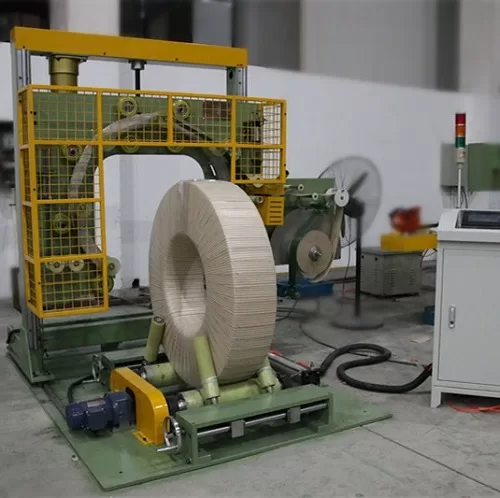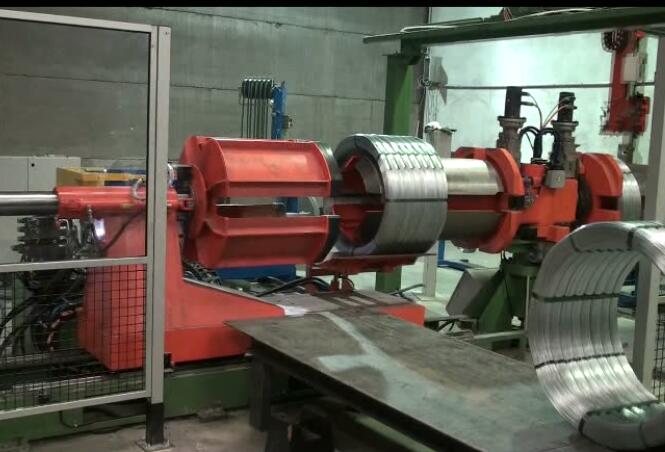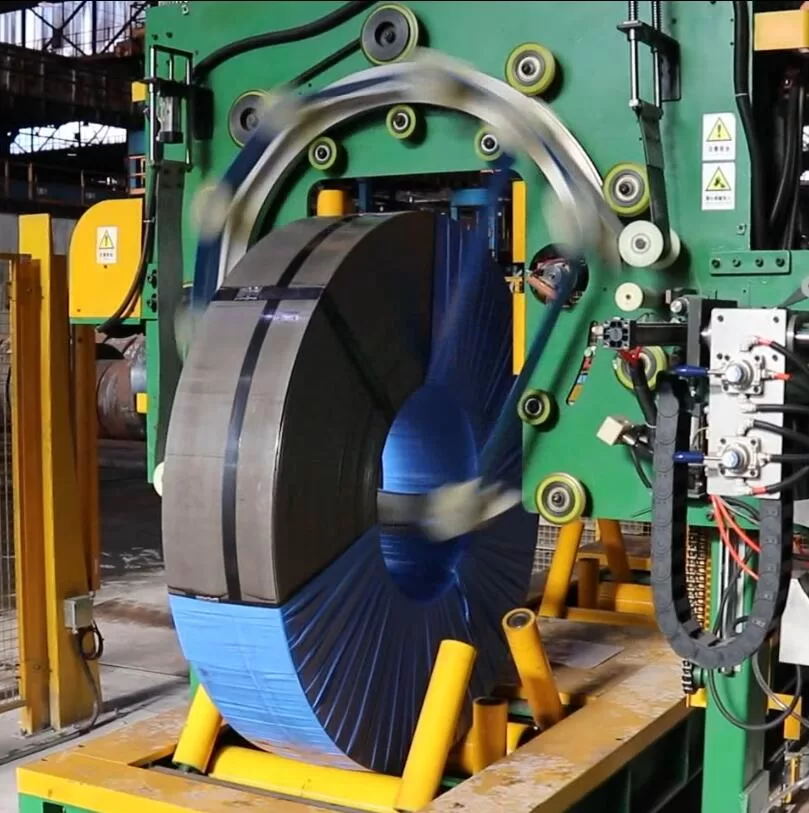Optimizing Coil Handling: Understanding Coil Wrappers with Transfer Cars
Handling large, heavy coils of materials like steel, aluminum, or wire presents significant challenges in manufacturing and processing environments. Ensuring both worker safety and product integrity during movement and packaging is paramount. An increasingly common solution is the automated coil wrapper with transfer car, an integrated system designed to streamline these critical operations.
What is a Coil Wrapper with Transfer Car?
A coil wrapper with transfer car is an automated packaging system combining two primary functions:
- Coil Wrapping: Securely wrapping coils using materials like plastic stretch film to protect them from environmental factors (moisture, dust) and provide stability for handling and transport.
- Automated Transfer: Moving the wrapped coils efficiently and safely from the wrapping station to subsequent processes, storage areas, or loading docks using an integrated transfer car or cart.
This equipment is crucial in industries where manual handling is impractical or hazardous due to the weight and size of the coils.
How the System Operates: A Step-by-Step Overview
While specific configurations vary, the typical operational sequence involves:
- Coil Loading: The unwrapped coil is loaded onto the wrapping station's conveyor or turntable, often via forklift, crane, or an upstream conveyor system.
- Positioning: Sensors ensure the coil is correctly positioned for optimal wrapping.
- Wrapping Cycle:
- The wrapping unit, equipped with a roll of stretch film, begins the cycle.
- The coil typically rotates on a turntable while the film carriage moves vertically, applying the film in overlapping layers.
- Parameters like film tension, overlap percentage, and the number of top/bottom wraps are pre-programmed via the control system (often a PLC).
- Once the wrapping pattern is complete, an automated clamp and cut mechanism secures the film tail.
- Transfer Sequence:
- The integrated transfer car moves into position at the wrapping station.
- The wrapped coil is automatically pushed, lifted, or conveyed onto the transfer car.
- The car then transports the coil along a predefined path (often on rails or guided tracks) to its designated drop-off point.
- Coil Unloading: The transfer car deposits the coil onto another conveyor, storage saddle, pallet, or designated floor area. The car then returns to the wrapping station or awaits the next cycle.

coil wrapping machine Key Components and Features
Understanding the core components helps appreciate the system's capabilities:
- Wrapping Unit: Includes the turntable or rotating mechanism, the vertical film carriage mast, the stretch film roll holder, and the pre-stretch system (which optimizes film usage).
- Film Application System: Features the automated film clamp, cut, and wipe-down mechanism for cycle completion.
- Transfer Car: The motorized cart designed to carry the coil's weight, equipped with drive motors, guide rollers/wheels, and sensors for positioning and safety. It often includes a powered conveyor or push/pull mechanism for loading/unloading.
- Conveyor Systems: Input and output conveyors to integrate the system smoothly into the production line.
- Control System: Typically PLC-based, with an HMI (Human-Machine Interface) for setting parameters, monitoring operation, and diagnostics.
- Safety Features: Essential components like safety fencing, light curtains, emergency stops, and warning signals to protect personnel during operation.
Benefits of Automated Coil Wrapping and Transfer
Implementing such a system offers significant advantages:
- Enhanced Safety: Dramatically reduces manual handling of heavy coils, minimizing risks of strains, crush injuries, and accidents.
- Increased Efficiency: Automates wrapping and transfer, significantly boosting throughput compared to manual or semi-automatic methods.
- Improved Coil Protection: Consistent, tight wrapping shields coils from dust, moisture, and surface damage during storage and transit. Stretch film provides excellent load stability.
- Reduced Labor Costs: Frees up personnel from manual wrapping and transport tasks, allowing them to focus on higher-value activities.
- Consistent Wrap Quality: Automated controls ensure every coil is wrapped according to specified parameters, reducing film waste and ensuring uniform protection.
- Optimized Material Usage: Pre-stretch systems can significantly reduce stretch film consumption compared to manual wrapping.
- Integration Potential: Can be seamlessly integrated into larger automated production and warehousing systems.

steel coil packing machine for sale Common Industry Applications
Coil wrappers with transfer cars are vital in various sectors:
- Steel Mills and Service Centers: Handling hot-rolled, cold-rolled, galvanized, and coated steel coils.
- Aluminum Processing Plants: Wrapping and transferring sensitive aluminum coils.
- Wire and Cable Manufacturing: Packaging large spools or coils of wire and cable.
- Tube and Pipe Mills: Handling large coils of raw material before processing.

Considerations for Implementation
When evaluating a coil wrapper with a transfer car system, key factors include:
- Coil Specifications: Minimum/maximum diameter, width, and weight requirements.
- Throughput Needs: Required number of coils wrapped and transferred per hour/shift.
- Plant Layout: Available floor space, ceiling height, and integration path for the transfer car.
- Material Handling Interfaces: Compatibility with existing cranes, forklifts, AGVs, or conveyor systems.
- Wrapping Material: Type and specifications of stretch film or other required wrapping materials.
- Control System Integration: Compatibility with existing plant control architecture.
- Safety Standards: Ensuring the system meets relevant industry and regional safety regulations (e.g., [Link to relevant ISO or ANSI standard body]).
- Maintenance Access: Designing the layout for safe and efficient routine maintenance.
Safety and Maintenance Protocols
Safe operation and longevity depend on adherence to protocols:
- Operator Training: Ensure all operators are thoroughly trained on system operation, safety features, and emergency procedures.
- Personal Protective Equipment (PPE): Mandate appropriate PPE when interacting with or working near the machinery.
- Regular Inspections: Conduct routine checks of mechanical components, sensors, safety devices, and wiring.
- Preventive Maintenance: Follow the manufacturer's recommended schedule for lubrication, adjustments, and replacement of wear parts (like film cutting blades).
- Area Safety: Keep the operating area clear of obstructions and ensure safety guards are always in place during operation.
Conclusion
The coil wrapper with transfer car represents a significant advancement in automated coil packaging and handling technology. By combining secure wrapping with efficient, automated transfer, these systems address key industry challenges related to safety, productivity, and product protection. For facilities handling large volumes of metal coils or similar products, investing in such automation offers a robust solution to streamline operations and enhance overall efficiency in demanding industrial environments.
